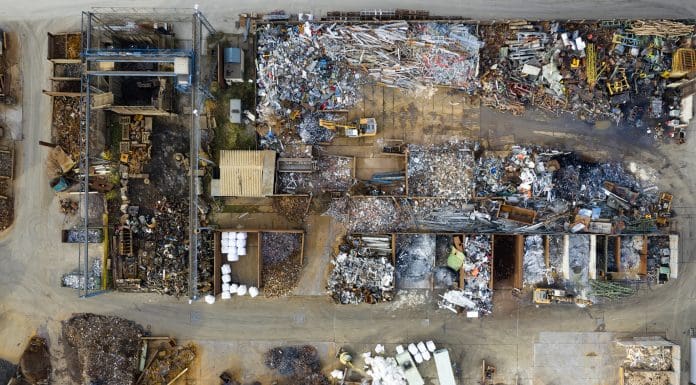
As the construction industry prepares for the next wave of net-zero legislation, will platforms for second-hand building materials be key?
Touted as a transformative model for circular construction, these digital-physical marketplaces connect supply and demand for reclaimed materials, with ambitions to reduce carbon impact, minimise waste, and unlock long-term value from construction and demolition cycles.
But according to a new longitudinal study presented at ARCOM 2024 by Koch, Pedersen and Fredslund, this emerging infrastructure may still be far from delivering on its climate promises.
Despite political support and regulatory nudges from the European Green Deal and EU Taxonomy, most second-hand platforms struggle to scale, commercialise, or deliver material traceability; crucial aspects for circularity.
What are circular building platforms?
These platforms serve as intermediaries in the reuse economy, providing not only material exchanges but also support for logistics, documentation, and quality control.
Some act purely digitally, while others integrate physical warehousing or collaborate with demolition firms and transportation networks.
These platforms aim to reduce embodied carbon through reuse, divert usable materials from landfill, enable low-carbon design through existing asset mapping, and match-make between demolishers and designers or contractors.
However, their effectiveness depends on complex factors such as legal liabilities, storage logistics, quality assurance, market demand, and government procurement practices.
What the study found
Over three years, the researchers analysed 10 platforms across seven countries using interviews, document reviews, and digital analysis. Key findings include:
1. Several platforms remain entrepreneurial and fragile
Many platforms are still startup-scale with limited staff and funding. They often depend on micro-enterprises and niche contractors. Platforms like SalvoWEB and Rotor show small average storage spaces (~3,000 m²) and regional activity footprints.
2. Institutional barriers hamper growth
The research highlights a lack of unified regulation across the EU. Platforms must navigate conflicting rules on waste, taxation, and sustainable procurement. Moreover, some markets, like Denmark, prioritise Life Cycle Assessments (LCA) over material reuse, creating a misalignment.
3. Warranties and quality are major roadblocks
Buyers still hesitate due to limited assurances on structural performance or aesthetic defects. Without standardised testing and traceability, reclaimed materials carry perceived risk.
4. Logistics are still carbon-intensive
Platforms exhibit varying awareness of emissions associated with transportation. Restado and Concular are currently the only ones actively quantifying and addressing this issue in their business model.
5. Little evidence of acceleration
Despite rising interest, most platforms have not shown meaningful volume growth. The study warns of “playground” enthusiasm without systemic scaling — a risk to both business resilience and climate strategy.
Implications for UK construction stakeholders
The UK government and large contractors are under pressure to decarbonise supply chains and meet embodied carbon targets. In light of this, these platforms could play a vital role in futureproofing construction procurement if integrated effectively.
There are several challenges to address and opportunities to consider, including:
- Documentation gaps: Lack of uniformity in how reclaimed materials are recorded and certified
- Risk management: Legal ambiguity around defects or failure liability
- Cost recovery: Reuse may not yet be cheaper than new, especially once transport and reprocessing are factored in
- Public sector procurement: Local authorities could stimulate demand by mandating reuse quotas
- BIM integration: Linking reuse data with Building Information Modelling for real-time asset management
- PPP innovation: Collaborations between local demolition contractors, logistics firms, and platform operators for smoother operation
The road ahead
A key insight from the study is the need to scale beyond isolated platforms. Instead of small regional services, the UK construction sector should explore federated platforms — networked ecosystems that allow interoperability and pooled inventory visibility.
Furthermore, the authors call for a paradigm shift: from passive market facilitation to active market creation. This means mobilising public-private partnerships (PPPs) to share ownership and liability, investing in platform infrastructure, not just databases, and providing innovation funding tied to measurable reuse outcomes.
A line in the study states: “If we treat second-hand materials as a liability, they’ll stay on the shelf. If we reframe them as a serviceable asset class, a true circular market can emerge.”
The construction industry is rightly focused on innovation, from MMC to AI. But sometimes, the real disruption is in looking backwards, at bricks and timber pulled from buildings long forgotten. Platforms for second-hand building materials represent an ambitious attempt to redesign not just construction, but the very markets they operate within.
The choice now facing the UK sector is whether to treat this as a compliance checkbox or a competitive advantage.
The post The rise of circular construction platforms: Myth or market disruptor? appeared first on Planning, Building & Construction Today.

